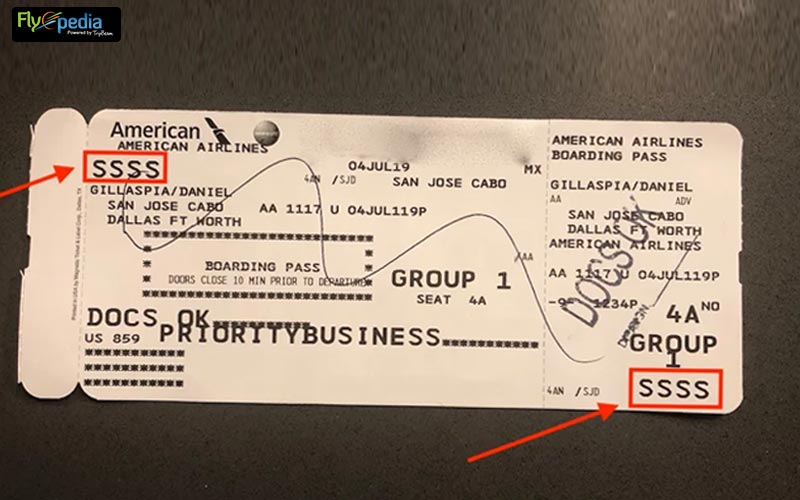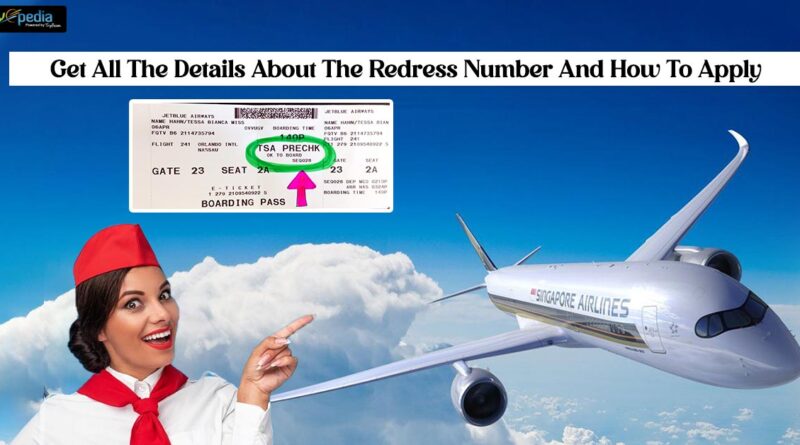Get All The Details About The Redress Number And How To Apply
While booking your international flights to India from USA you must have stumbled upon the term “redress number” and multiple questions like “what is a redress number?” must have come across your mind. Don’t worry, though! Flyopedia has covered everything you must know about redress numbers in this blog, and we describe it in more detail below.
When you fly, going through airport security may be an incommodious and lengthy process. If you ever have to go through further screening and get pulled aside for inspection each time you travel might be problematic Nobody wants to experience difficulties while traveling especially when you are going to board long-haul flights to India from USA. In situations like these, the redress number might be your lifesaver and speed up and streamline airport security operations. Getting a redress control number would be a smart decision even if the airport screening goes smoothly and there are no problems.
A Redress Number: What Is It?
The Department of Homeland Security Traveler Redress Inquiry Program (DHS TRIP) issues redress numbers, which are distinctive 7-digit record identifiers, to travelers who have asked for redress for troubles they encountered during travel security screening. It enables the TSA to verify the passenger’s identity and eliminate watch list misidentification.
TRIP Program of DHS
A single point of contact for travelers with questions or problems they encountered during their travel screening at airports and railway stations is the DHS Travel Redress Inquiry Program (DHS TRIP). Using DHS redress numbers prevents the government from mistakenly identifying travelers. It resembles the passenger numbers needed for TSA Precheck or global admission quite a bit. However, using this number does not ensure faster security on international flights to India from USA but it aids in your ability to pass secondary screening and security inspections without incident.
Known Traveler Number vs. Redress Number (KTN)
An eight-digit code, known as a Known Traveler Number (KTN), connects your TSA Pre-check registration to your travel plans. The same number serves for NEXUS, Global Entry, and SENTRI, among other reputable travel programs. This number is your “PASSID” for these programs. Furthermore, a redress number serves as a special identifier enabling the TSA to correctly identify travelers who may have been mistakenly labeled as needing further screening on flights from the USA to India.
How Can I Acquire A Redress Number?

If you consistently experience issues with the screening or identification procedures carried out by airport workers, you can ask for a redress number to prevent similar inconveniences in the future. It will take less time to process your application if you submit it online as opposed to by email. Additionally, you must sign all of the documents you are attaching if you wish to submit an email to obtain a redress number. The time it takes to process a mailed application can exceed a month. Once we receive your application, you will be notified through email. Furthermore, your redress control number will be sent to you by email after the proceedings are completed.
You must do the following actions in order to submit your application without any errors:
Step 1: List your travel experiences as the first thing you do when submitting your application. You must include all relevant information regarding your trip, including the airline, airport, and flight number. For instance, if you have reserved flight tickets to India from the United States, you must include the date of the flight, the flight number, the name of the airline, and the airport (departure & arrival).
Stage 2: The second stage provides a box with information about privacy infringement. You can check the box if you ever believe that airport personnel has shared your private and highly secret information with anyone. When requesting a redress number for this exclusive purpose, only your name is required.
Stage 3: In the third step, you must elaborate on your flight experiences and privacy incidents. The boxes you checked in the first and second steps are enforced in this stage.
Phase 4: Your personal data is the focus of this step. You must enter all of your personal information, including your name, birthdate, age, place of birth, height, gender, hair color, eye color, and any other distinguishing characteristics or identification features. You must also state whether or not you are a citizen of the United States.
Step 5: In the fifth step, you must include both a physical address and a mailing address. A valid email address will also be required but it is not mandatory.
Step 6 – The sixth step is necessary only if it applies to you. If you know an attorney or other person who is helping you with this DHS TRIP, please include his name and contact information. Before disclosing that person’s information, you must have their consent. Additionally, DHS form 590 must be completed for this.
Step 7: Document identification is done in this. It requires a copy of your current passport as well as a few other official identity documents. The following documents are required:
- Passport and Driving Permit
- Birth Certificate and Certificate of Citizenship (if you are under 18)
- Military and official identification cards and a visa for immigrant and non-immigrant
- Alien Registration
- Border Crossing Card with a Picture of a SENTRI, FAST, NEXUS, or Global Entry
Step 8: If you are sending your application by mail or email, you must acknowledge it by signing it and including the date of submission. Your application won’t be accepted by the authorities if it is unsigned.
What situations call for a redress number?
You can file an inquiry and request a redress number if you’ve been selected for further screenings on multiple occasions to ensure it doesn’t happen again. You can submit a request for information with the DHS if you’ve encountered problems in any of the following areas of airport control:
- Having trouble navigating TSA checks
- Having difficulties navigating Customs and Border Protection checks
- Situations in which you had to undergo further screening at the airport
If a representative at the airport delays or refused your boarding, you can also use the Traveler Redress Inquiry Program (TRIP).
If an airport, security, or customs official informed you that your information was inaccurate, that your fingerprints and photo ID didn’t match your identity, or that you were on a no-fly list, this situation is particularly urgent. In these situations, you should submit an application to the DHS as soon as possible rather than only thinking about acquiring a redress number.
How long does it take to receive a redress number?
DHS TRIP will process your request after receiving and verifying your application and supporting documents. Depending on the type of request, the review of a request for redress must last at least 30 working days.
The processing time, however, can be considerably less; some people are able to have their requests accepted in as little as a week. Nevertheless, delays have occasionally resulted in requests taking up to 50 days.
How do I utilize a complaint number?
You should notice a field to enter your redress number when booking a flight, usually next to the space for your Known Traveler Number. On the website of your preferred airline, you can also add your redress number to your frequent flyer profile.
How do I update my flight or travel profile to include my redress number?
Your flight or travel profile must include your redress control number. By following this process, you can add the redress control number to your reservation and have it printed on your boarding ticket for upcoming flights. If you were issued a redress number after making existing reservations, it might be necessary to contact the airline to add the redress number to those reservations.
Frequently asked questions.
- What is the redress number?
Travelers who believe they have been wrongly identified, unfairly delayed, or prevented from boarding a flight can use the DHS TRIP’s redress number, a seven-digit code, to prevent further delays.
- Is having a redress number necessary when traveling?
That depends on the circumstances. You don’t need one if you’ve had no problems passing through the airport’s security checks during your international flights to India from USA. However, if you frequently experience security-related concerns with airport workers while traveling, you require a complaint number.
- A Global Entry Card: What Is It?
Through the Trusted Traveler Program (TTP), Global Entry, low-risk travelers can be pre-approved and given quicker clearance when they arrive in the USA by air, sea, or land. It is accessible via the Customs and Border Protection department of the United States.
- Where can I get a redress or complaint number?
The DHS TRIP official website allows you to get a redress number.
- Can I get a redress number if I’m not a US citizen?
You don’t need to be a citizen of the US to apply for a TSA redress number.
Nearly everything you need to know about a redress number is provided here. This site is meant to be educational and helpful, we hope. At Flyopedia Canada our staff will do all in its power to respond to all of your inquiries as quickly as possible.




